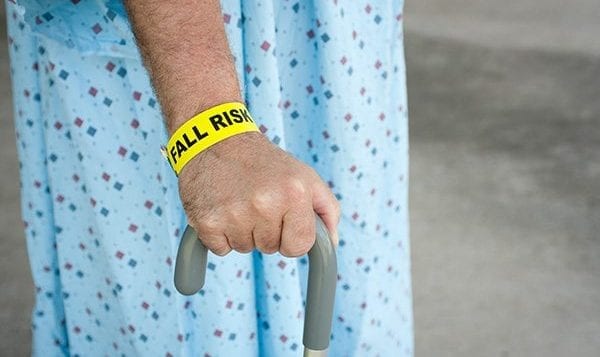Look beyond the number of steps you take

By David Dunaief, M.D.
For most of us, exercise is not a priority during the winter months, especially during the holiday season. We think that it’s okay to let ourselves go and that a few more pounds will help insulate us from the anticipated cold weather, when we will lock ourselves indoors and hibernate. Of course I am exaggerating, but I am trying to make a point. During the winter, it is even more important to put exercise at the forefront of our consciousness, because we tend to gain the most weight during the Thanksgiving to New Year holiday season (1).
Many times we are told by the medical community to exercise, which of course is sage advice. It seems simple enough; however, the type, intensity level and frequency of exercise may not be well defined. For instance, any type of walking is beneficial, right? Well, as one study that quantifies walking pace notes, some types of walking are better than others, although physical activity is always a good thing compared to being sedentary.
We know exercise is beneficial for prevention and treatment of chronic disease. But another very important aspect of exercise is the impact it has on specific diseases, such as diabetes and osteoarthritis. Also, certain supplements and drugs may decrease the beneficial effects of exercise. They are not necessarily the ones you think. They include resveratrol and nonsteroidal anti-inflammatory drugs (such as ibuprofen). Let’s look at the evidence.
Walking with a spring in your step
While pedometers give a sense of how many steps you take on a daily basis, more than just this number is important. Intensity, rather than quantity or distance, may be the primary indicator of the benefit derived from walking.
In the National Walkers’ Health Study, results showed that those who walk with more pace are more likely to decrease their mortality from all causes and to increase their longevity (2). This is one of the first studies to quantify specific speed and its impact. In the study, there were four groups. The fastest group was almost jogging, walking at a mean pace of less than 13.5 minutes per mile, while the slowest group was walking at a pace of 17 minutes or more per mile.
The slowest walkers had a higher probability of dying, especially from dementia and heart disease. Those in the slowest group stratified even further: Those whose pace equaled 24-minute miles or greater had twice the risk of death compared to those who walked with greater speed. However, the most intriguing aspect of the study was that there were big differences in mortality reduction in the second slowest category compared to the slowest, which might only be separated by a minute-per-mile pace. So don’t fret: You don’t have to be a speed walker in order to get significant benefit.
Mind-body connection
The mind also plays a significant role in exercise. When we exercise, we tend to beat ourselves up mentally because we are disappointed with our results. The results of a new study say that this is not the best approach (3). Researchers created two groups. The first was told to find four positive phrases, chosen by the participants, to motivate them while on a stationary bike and repeat these phrases consistently for the next two weeks while exercising.
Members of the group who repeated these motivating phrases consistently, throughout each workout, were able to increase their stamina for intensive exercise after only two weeks, while the same could not be said for the control group, which did not use reinforcing phrases.
‘Longevity’ supplement may have negative impact
Resveratrol is a substance that is thought to provide increased longevity through proteins called Sirtuin 1. So how could it negate some benefit from exercise? Well, it turns out that we need acute inflammation to achieve some exercise benefits, and resveratrol has anti-inflammatory effects. Acute inflammation is short-term inflammation and is different from chronic inflammation, which is the basis for many diseases.
In a small randomized controlled study, treatment group participants were given 250 mg supplements of resveratrol and saw significantly less benefit from aerobic exercise over an eight-week period, compared to those who were in the control group (4). Participants in the control group had improvements in both cholesterol and blood pressure that were not seen in the treatment group. This was a small study of short duration, although it was well designed.
Impact on diabetes complications
Unfortunately, type 2 diabetes is on the rise, and the majority of these patients suffer from cardiovascular disease. Drugs used to control sugar levels don’t seem to impact the risk for developing cardiovascular disease.
So what can be done? In a recent prospective (forward-looking) observational study, results show that diabetes patients who exercise less frequently, once or twice a week for 30 minutes, are at a higher risk of developing cardiovascular disease and almost a 70 percent greater risk of dying from it than those who exercised at least three times a week for 30 minutes each session. In addition, those who exercised only twice a week had an almost 50 percent increased risk of all-cause mortality (5). The study followed more than 15,000 men and women with a mean age of 60 for five years. The authors stressed the importance of exercise and its role in reducing diabetes complications.
Fitness age
You can now calculate your fitness age without the use of a treadmill, according to the HUNT study [6]. A new online calculator utilizes basic parameters such as age, gender, height, weight, waist circumference and frequency and intensity of exercise, allowing you to judge where you stand with exercise health. This calculator can be found at www.ntnu.edu/cerg/vo2max. The results may surprise you.
Even in winter, you can walk and talk yourself to improved health by increasing your intensity while repeating positive phrases that help you overcome premature exhaustion. Frequency is important as well. Exercise can also have a significant impact on complications of chronic diseases, such as cardiovascular disease and resulting death with diabetes.
When the weather does become colder, take caution when walking outside to avoid black ice or use a treadmill to walk with alacrity. Getting outside during the day may also help you avoid the winter blues.
References: (1) N Engl J Med. 2000;342:861-867. (2) PLoS One. 2013;8:e81098. (3) Med Sci Sports Exerc. 2013 Oct. 10. (4) J Physiol Online. 2013 July 22. (5) Eur J Prev Cardiol Online. 2013 Nov. 13. (6) Med Sci Sports Exerc. 2011;43:2024-2030.
Dr. Dunaief is a speaker, author and local lifestyle medicine physician focusing on the integration of medicine, nutrition, fitness and stress management. For further information, visit www.medicalcompassmd.com or consult your personal physician.













 We know exercise is important in diseases and breast cancer is no exception. In an observational trial, exercise reduced breast cancer risk in postmenopausal women significantly (9). These women exercised moderately; they walked four hours a week. The researchers stressed that it is never too late to exercise, since the effect was seen over four years. If they exercised previously, but not recently, for instance, five to nine years ago, no benefit was seen.
We know exercise is important in diseases and breast cancer is no exception. In an observational trial, exercise reduced breast cancer risk in postmenopausal women significantly (9). These women exercised moderately; they walked four hours a week. The researchers stressed that it is never too late to exercise, since the effect was seen over four years. If they exercised previously, but not recently, for instance, five to nine years ago, no benefit was seen.











